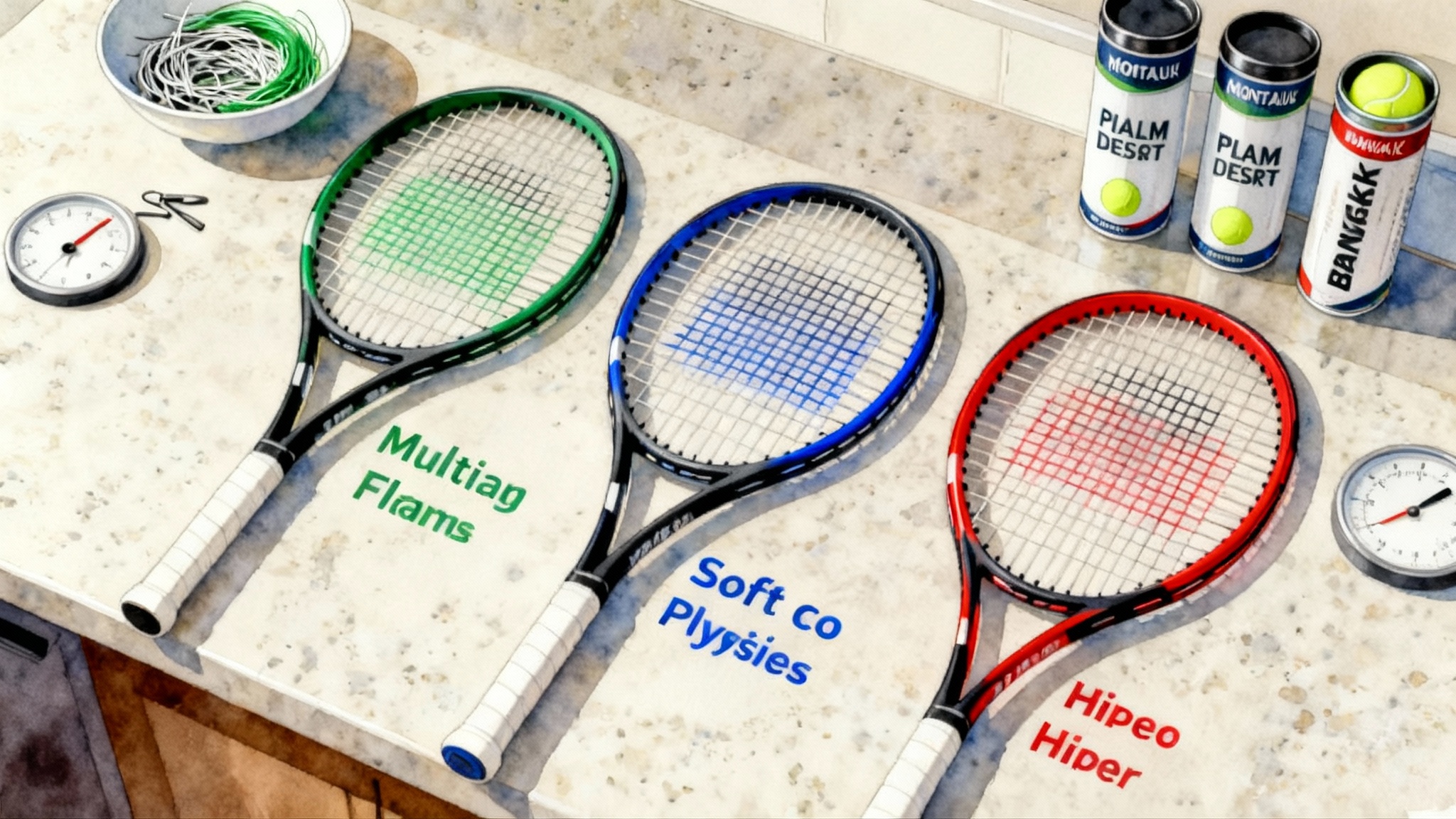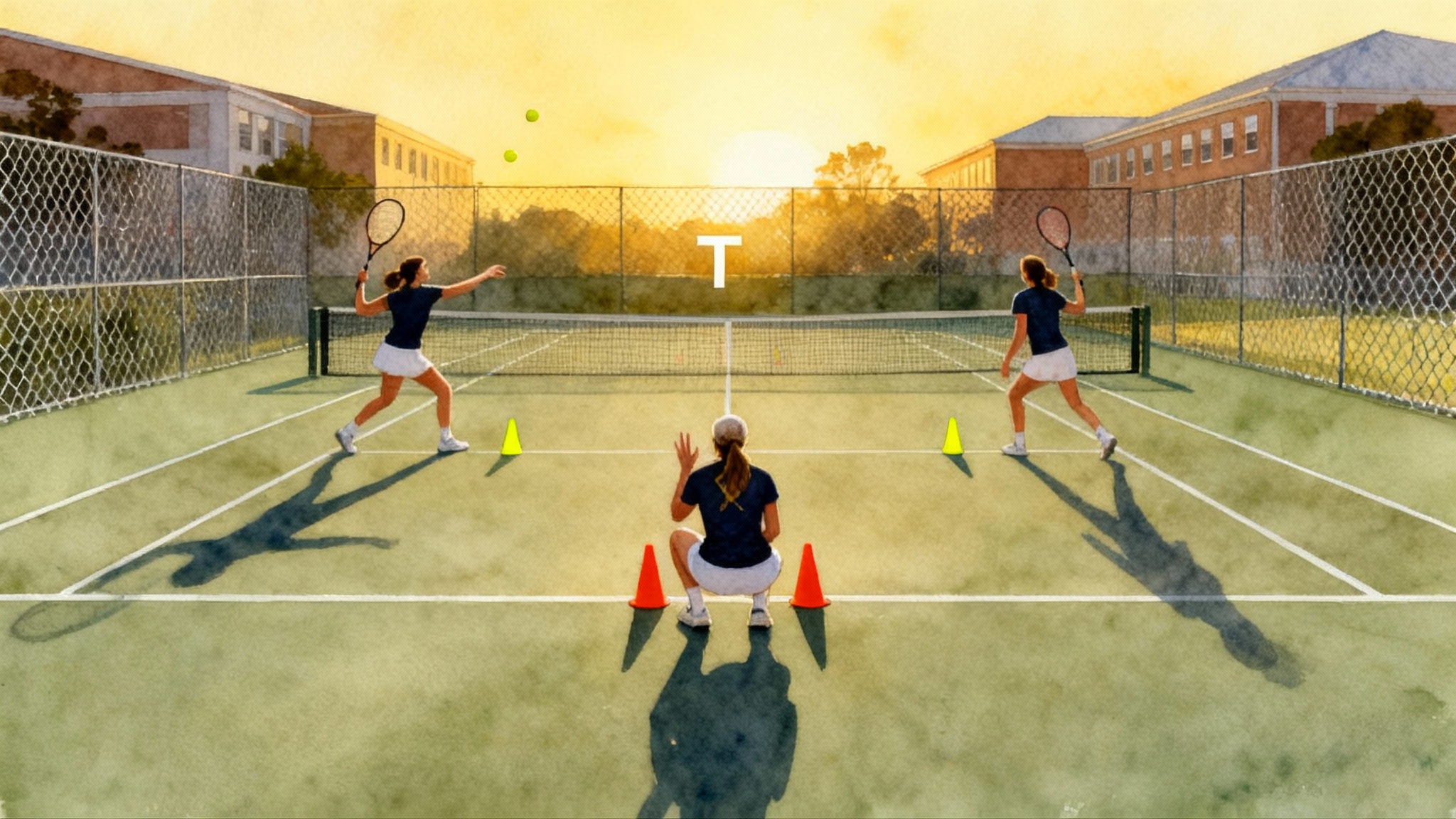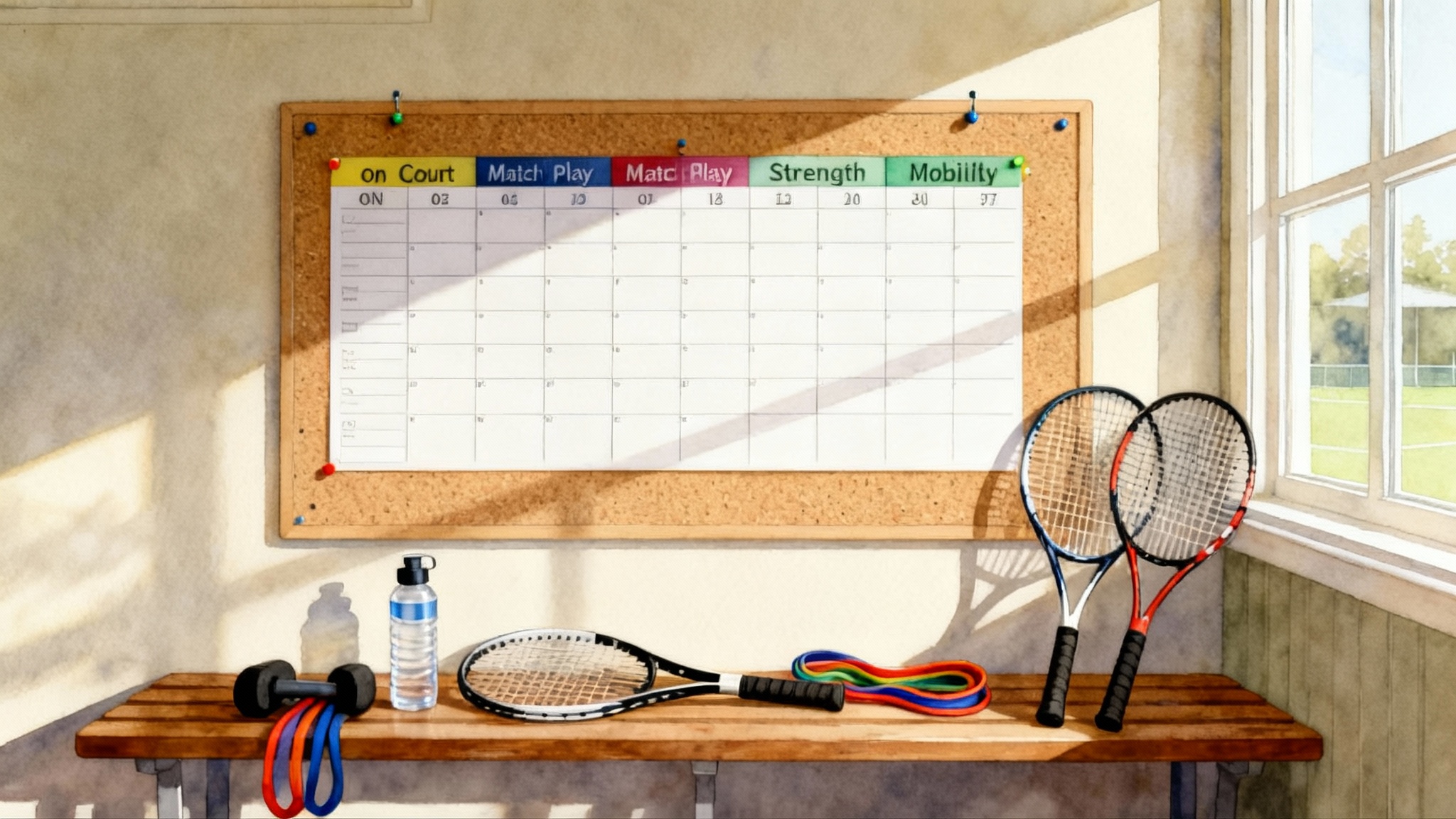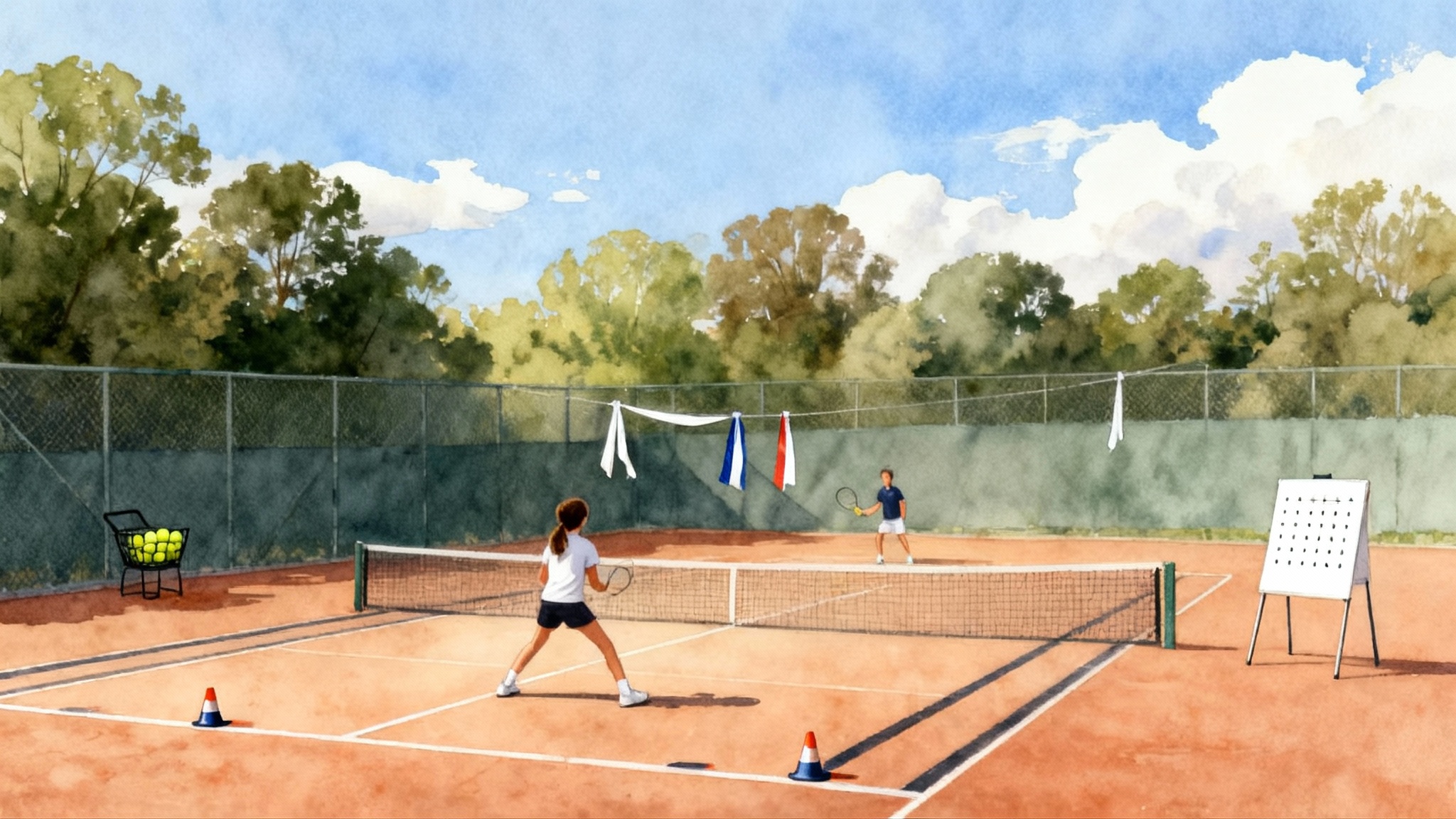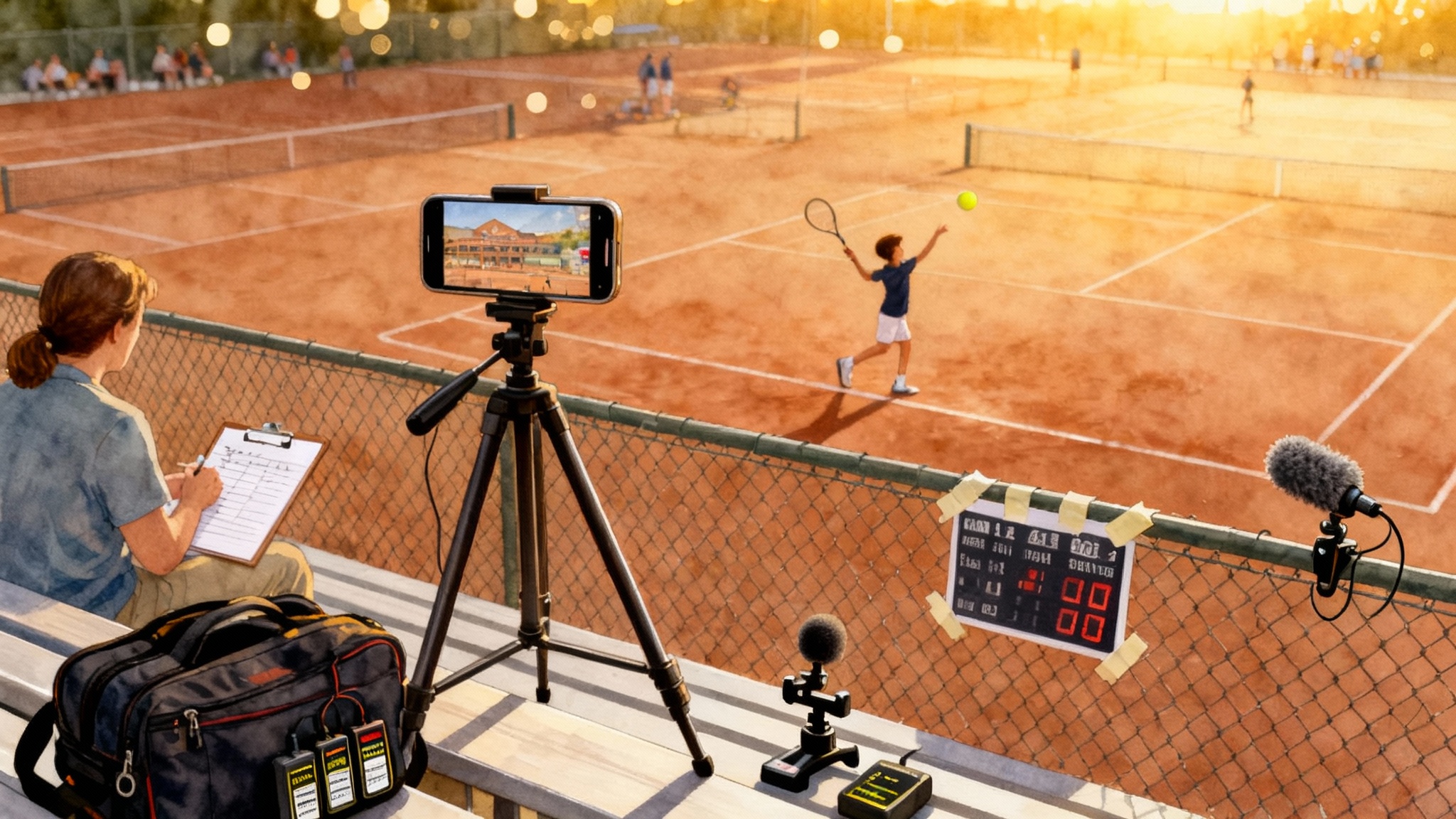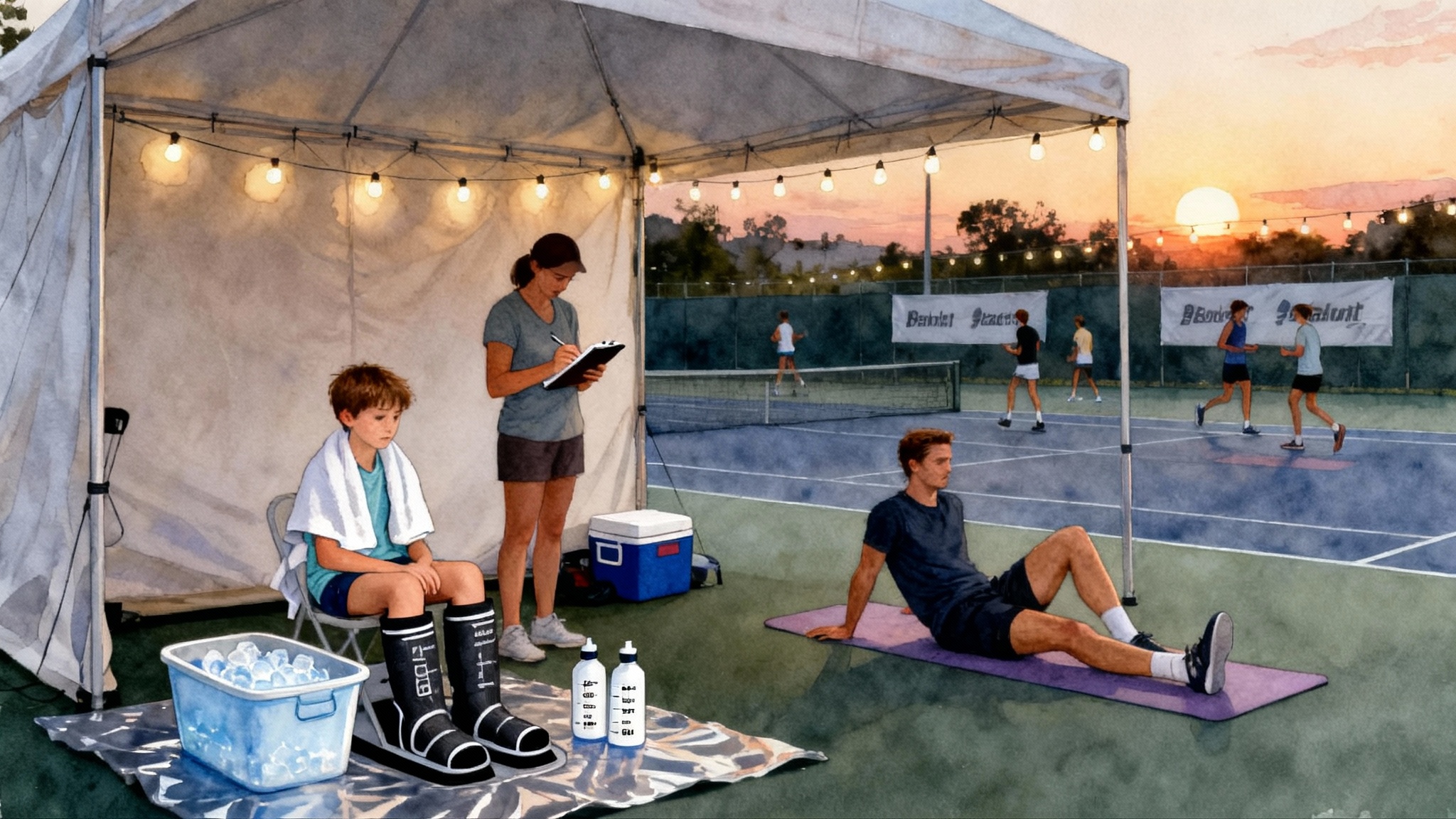WTN vs UTR in 2025: Build a Recruitable Rating Without Burnout
Confused about WTN and UTR in 2025? This guide explains what each rating measures, how college coaches read them, which events move the needle, and how to plan stress‑light schedules that still build a recruitable profile.

The fast, clear answer
Parents and juniors want one thing in recruiting: a rating that coaches trust. In 2025 that means understanding two systems and using them wisely. The World Tennis Number is the global scale managed by the International Tennis Federation. Universal Tennis Rating is a private platform that powers many American events and coach dashboards. The smart play is not either or. The smart play is to build both in a way that fits school, budget, and health.
- World Tennis Number (WTN) runs from 40.0 for beginners to 1.0 for world class. It is a probability model that updates as you play, and longer match formats tend to carry more weight. See the official ITF World Tennis Number overview for how the scale works.
- Universal Tennis Rating (UTR) is a continuous scale where higher is better. It uses who you played, the score, and the expected result to adjust your number. The company explains its inputs on the UTR rating methodology page.
Keep those two ideas in view as you plan tournaments. WTN cares a lot about opponent quality and format weight. UTR cares about opponent quality and the actual game score compared with expectation. If you upset a stronger player, both move up. If you beat someone well below you, both barely move.
How college coaches actually use WTN and UTR
Most college staffs, especially in the United States, scan both ratings within seconds of opening a prospect’s profile. Then they check three things.
- Strength of schedule. Did you play other rated or ranked players or was your record built in closed local events?
- Trend line. Are your numbers stable or spiky across the last six to nine months?
- Video and references. Two or three good match clips and a short note from a coach they trust can turn a maybe into a phone call. For format and examples, see our college recruiting video guide.
Coaches do not need perfection. They need signal. A balanced schedule that shows verified wins against peers and a few challenges against stronger players is the cleanest signal you can send.
What moves each rating
Here is a practical map of which events influence WTN and UTR for juniors in the United States.
- USTA L1 to L7 junior tournaments
- Count for WTN when they are reported by USTA to the ITF data feed. They also change UTR because they are verified draws. L1 to L3 are national level, L4 to L5 are sectional to district, L6 to L7 are local entry points. Higher levels usually mean stronger opponent pools which help both ratings.
- ITF Junior J events
- Count heavily for WTN, especially at longer formats, and they influence UTR if the event is in the verified feed. J60 to J300 levels offer deeper fields, so expect larger rating movements when you compete well.
- UTR Verified tournaments or duals
- Always count for UTR. They may or may not feed WTN depending on sanctioning. These are excellent for building steady match volume and improving the score-based elements in UTR.
- High school matches
- Often count for UTR if the matches are reported through a verified pathway. They usually do not count for WTN. Treat these as maintenance and confidence reps rather than core rating drivers unless your state runs a verified series.
Opponent quality and format weight
- Play close to your level or a little above. Upsets move ratings more than routine wins. Repeated blowouts against much lower opposition rarely help and sometimes hurt if the score is closer than expected.
- Longer formats have more influence on both systems. A full best of three set match usually moves more than a single set or short-set format. When you need meaningful movement, choose events with full scoring.
- Scores matter for UTR. Winning 6-4 6-4 against a similar rating helps more than 7-6 7-6, and losing 6-7 6-7 to a stronger opponent can still nudge you up.
Common traps to avoid
- Chasing points without a plan. Jumping into every draw that seems weak wastes money and creates volatility when one off day erases a month of small gains.
- Over-travel. Extra flights do not impress coaches if the opponent list could have been found closer to home.
- Ignoring recovery. Ratings are lagging indicators. Training quality and health today drive your numbers six weeks from now. After big events, follow our 48-hour tennis recovery plan.
Age-banded target ranges by college level
Every program sets its own bar, and positions vary by year. Use these ranges as starting points, not absolutes. The goal is to be in range early, then add proof through schedule strength, video, and coach references.
Boys
- Division I power conference by junior year
- UTR 12.5 to 13.5 plus, WTN roughly 1 to 7
- Division I mid to low major by junior year
- UTR 11.5 to 12.8, WTN roughly 4 to 12
- Division II competitive by senior year
- UTR 10.5 to 12.0, WTN roughly 8 to 16
- Division III top academic by senior year
- UTR 10.0 to 11.5, WTN roughly 10 to 18
- NAIA and Junior College by senior year
- UTR 8.5 to 11.0, WTN roughly 14 to 22
Girls
- Division I power conference by junior year
- UTR 10.5 to 11.8 plus, WTN roughly 3 to 12
- Division I mid to low major by junior year
- UTR 9.5 to 10.8, WTN roughly 6 to 16
- Division II competitive by senior year
- UTR 8.8 to 10.2, WTN roughly 10 to 20
- Division III top academic by senior year
- UTR 8.0 to 9.8, WTN roughly 12 to 22
- NAIA and Junior College by senior year
- UTR 7.0 to 9.0, WTN roughly 16 to 28
These are guidance bands. A big win against a high-level opponent, a strong doubles track, or excellent academics can shift the conversation in your favor.
A simple decision tree for picking tournaments
Use this before every entry deadline. It saves time and nerves.
- What do you need right now?
- If you need confidence and reps, pick a local L6 or L7, or a UTR Verified round robin with full scoring.
- If you need rating movement, target L3 to L4 sectional events or a UTR Verified event that attracts peers and a few stronger players.
- If you are stable and preparing for a big run, use a two to three week block with one event and two weeks of training to raise physical readiness.
- Will the event post verified results?
- If yes for your target rating, keep it on the list.
- If no, treat it as practice. Enter only if it fits travel and training.
- What is the likely opponent pool?
- Scan past draws. If most players are well below you, skip it. If the field includes a band around your level with a few higher, that is ideal.
- What is the format?
- Full best of three sets moves more. If the event uses short sets or match tiebreaks for third, understand the movement will be smaller.
- Can you arrive rested and leave healthy?
- If travel compresses school or causes back to back weeks without a recovery day, pick a closer event or move the date.
Weekly training to competition splits
Adjust by age and school load. The goal is to keep training as the engine and competition as the test. For age-specific guidance, use these weekly tennis plans by age.
During school terms
- 70 percent training, 30 percent competition
- Example week during a non-tournament block
- 3 on-court drilling sessions, 2 match-play sessions, 2 strength and mobility sessions, 1 recovery session
- Example week with a tournament
- 2 drilling sessions early, 1 light match-play, tournament matches as they fall, 1 recovery day after
During summer
- 60 percent training, 40 percent competition
- Increase match-play in controlled settings, but protect one full rest day each week
- Add one block for heat acclimation and hydration routines
Two sample 12-week schedules you can copy
These templates assume one primary rating goal and typical school calendars in the United States. Shift dates to fit your term.
School term, 12 weeks, goal is steady WTN and UTR progress without travel overload
- Weeks 1 to 3: Training block, one UTR Verified dual night each week, one local L6 or L7 on Week 3
- Week 4: Rest and light training, video a practice set
- Week 5: Sectional L4, full scoring, scout likely field
- Week 6: Recovery, high-quality drilling, one verified match-play evening
- Week 7: Local L5, enter singles and doubles
- Week 8: Strength phase, no tournament, film one verified practice match
- Week 9: Sectional L4 or National L3 if travel is reasonable
- Week 10: Recovery, one UTR Verified round robin
- Week 11: High school dual or team event if verified for UTR
- Week 12: Light local L6 or match-play day, compile clips and update coach email
Summer, 12 weeks, goal is meaningful rating movement with two peak events
- Weeks 1 to 2: Training block with heat acclimation, two verified match-play days
- Week 3: Sectional L4 or UTR Verified event with strong field
- Week 4: Recovery and travel prep
- Week 5: National L3 or ITF J event if accepted
- Week 6: Full rest weekend, light technical work
- Week 7: UTR Verified event with three guaranteed matches
- Week 8: Recovery plus doubles emphasis
- Week 9: Peak event, National L2 or strong ITF J
- Week 10: Recovery and film review
- Week 11: Local L5 for confidence and reps
- Week 12: Rest, test set, update highlight video
A simple match-logging sheet that actually helps
Keep one sheet per match. Ten minutes of honest notes beat an hour of fuzzy memory.
- Event and level: USTA L4, UTR Verified dual, ITF J60
- Date and surface: include weather if it mattered
- Format: full best of three, short sets, match tiebreak
- Opponent name and ratings: WTN and UTR on match day
- Score by set: include tiebreak details
- Tactical plan: two bullet points you intended to use
- What worked: patterns that produced points
- What leaked points: unforced errors by pattern or decision
- Physical check: energy, cramping, first step speed
- Mental check: between-point routines, response to pressure
- Next action: one drill and one pattern to practice this week
Store your sheets in a shared folder with your coach. When a college staff asks for insight, you already have the story and the proof.
Using high school tennis the right way
High school can be a great lab for pressure and leadership, and it can deliver verified UTR results in many states. Use it to practice patterns that need reps, to log doubles sets, and to collect low-cost match film. Do not over-extend the schedule. If a long bus ride and a weekday match crush your sleep before a key weekend event, skip the weekday or ask to play doubles only.
How to talk about rating volatility
Ratings jump around when you change schedule density, opponent quality, or match formats. That is normal. Reduce whiplash with these habits.
- Protect recovery weeks after big events
- Keep at least one verified match-play session every 7 to 10 days
- Seek three to five opponents within one band above and below your rating each month
- Limit very short formats when you need movement, use them when you need reps
The academy playbook for recruiting support
The fastest way to build a reliable match stream is to partner with an academy that runs verified play and has college coach relationships. Programs like DFW Tennis Academy and T Bar M have the infrastructure to provide three assets every recruit needs.
- Steady verified match volume
- Weekly dual nights or round robins with full scoring and published draws
- Mixed-age sets that place you against peers and a few stretch opponents
- Calendar discipline, so you never go two weeks without a verified result
- Coach references that carry weight
- Staff who have sent players to the level you want, and who answer quickly when college coaches call
- Short, specific reference notes kept on file, for example: plays first ball forward on second serve returns, holds neutral on heavy backhands, great in tiebreak patterns
- Video capture and packaging
- Baseline angle match filming using a fence mount or tripod, with clear score overlays at changeovers
- Three to five point highlight reels that reveal patterns, not just winners
- A shared folder with match logs, updated clips, and a one-page bio and schedule
Ask academies these questions before you commit.
- How many verified match opportunities do you run each month and which rating do they feed?
- Can you place me routinely against opponents one band above my current rating?
- Will a lead coach watch at least one match per month and update my notes?
- Do you film sets and help me build a two minute highlight I can send mid season?
If an academy can say yes to those four, it can support your recruiting in a real way.
A practical month-by-month budgeting tip
Treat your calendar like a currency ledger. You have limited school nights, travel weekends, and recovery days. Allocate them the same way you allocate dollars.
- School months: one substantial event and one to two verified match-play nights
- Summer months: two substantial events and two verified match-play nights, plus one full weekend off
- After every big event: one no-competition weekend
This protects health and creates the steady drip of results that ratings need.
Putting it all together
Think of WTN and UTR as two lenses that let coaches estimate your level. WTN emphasizes opponent quality and format length. UTR adds score texture and expects you to outperform your predicted result over time. Your job is to play enough verified matches against the right band of opponents, in formats that matter, with a schedule that you can sustain.
When you do that, the numbers move, the video looks like your best self, and your references have real data to share. That is the profile a college coach wants to recruit.
Plan a twelve week block, pick events that feed at least one rating, log every match, and partner with an academy that runs verified play and films your sets. Strong ratings follow strong process. Winning recruiting follows both.
